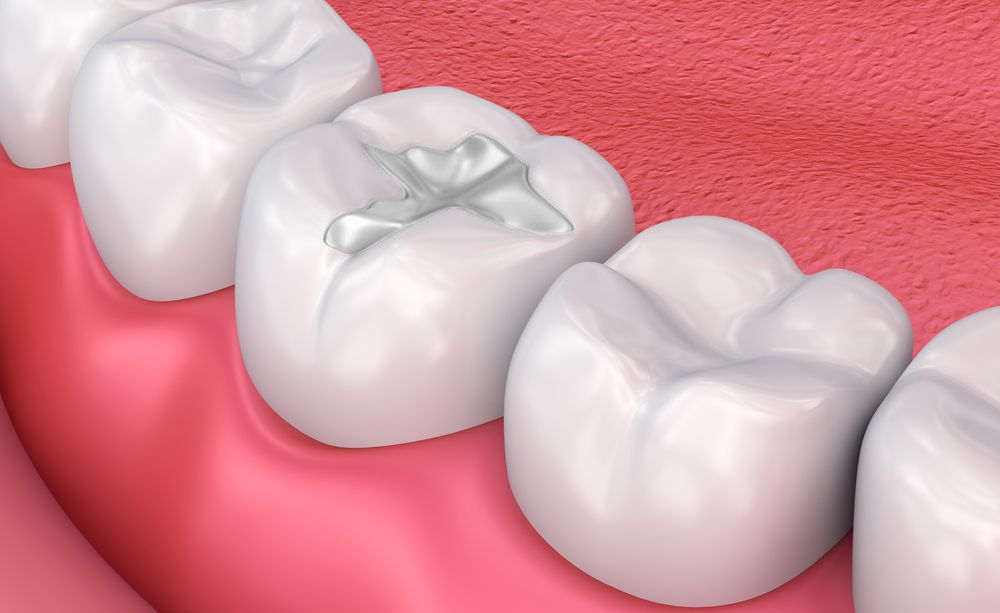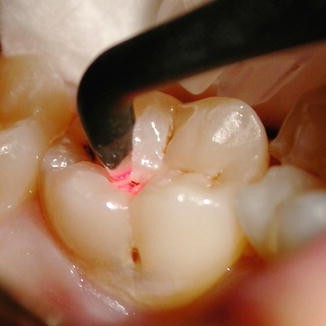
In case of tooth
decay, filling is a necessary step to ensure the health of teeth and the gums. There
are many ways to find out if tooth decay as occurred. Apart from decay, there
can other reasons where filling is required such as cracked or broken tooth, to
overcome effects of nail-biting and bruxism etc.
Direct observation
Sometimes
discoloured spot appears on the decayed teeth. The enamel of the decayed teeth
become soft that can be examined by using metal instrument with a tip.
Cavity detecting dye
The teeth are
bathed with the cavity detecting dye. It sticks to the decayed areas of the
teeth whereas cleanly comes off the healthy teeth.
X-ray analysis
X-ray can also
be used to detect the decaying teeth but it is not very accurate when detecting
cavitied on the top surfaces.
Laser fluorescence cavity detection aids
Laser
fluorescence can be used to detect cavities specially in the molar and premolar
teeth. It is also useful for the pit and
fissure areas.

Steps to filling
Local
anaesthesia is given in the start of the filling process. After that a drill or
laser is used to remove the decay with the metal cones (burs) in the handpiece.
High speed drill is used on the enamel and low speed on the dentin.
After removing
the decay, a base made up of composite resins or zinc oxide is used to protect
the pulp (nerve ccontaining area). Bonded filling is used to prevent the decay
under the filling. A special light is used to harden the filling. In the end
the filling is polished to level any sharp edges left during the procedure.
After a filling
Sensitivity is a
major issue after filling, especially after composite filling. Galvanic shock
can occur when the metals in the upper and the lower layer meet each other and
produce an electric current.
Temporary filling
Temporary
fillings can be used in case of any dental emergency, if the cavity reaches the
pulp and it time is required for the tooth to heal. Temporary fillings cannot
last for long and eventually they need to be replaced with a permanent filling
Replacing filling
In the course of
time the fillings become discoloured and wear out due to the pressure exerted
during chewing. The discoloured filling catch stains that darken over time. The
fillings need to be replaced to save the tooth from further decay.
Leaking and falling out fillings
The filling can
fall out if making hard use of the tooth, immense pressure and if saliva mixes
with the cavity during filling. Filling can also leak if it doesn’t fit the
tooth properly. It can lead to sensitivity and inflammation.
Keeping the fillings
Fillings can
last up to 12 years sometimes, but it should not be kept for more than five
years. X-rays can be used to detect any crack, leaking and damage. If teeth
become sensitive, any crack appears or a part of filling is missing the dentist
should be contacted as soon as possible. In case of large number of fillings,
fluoride gel recommended by the dentist should be used at home. Fluoride
varnishes can be applied during regular check-ups.
Clenching and grinding
Filling can be
bothered with clenching and grinding. These forces can introduce sensitivity to
the tooth. Clenching and grinding can result into cracks that can be detected
by shining light on the teeth.
With fillings,
visiting the dentist regularly, brushing teeth with fluoride toothpaste and
keeping an eye on the changes occurring to the filling is the best approach.
No comments:
Post a Comment